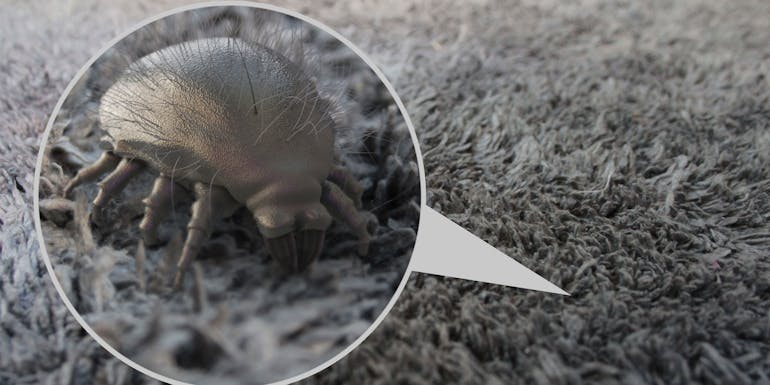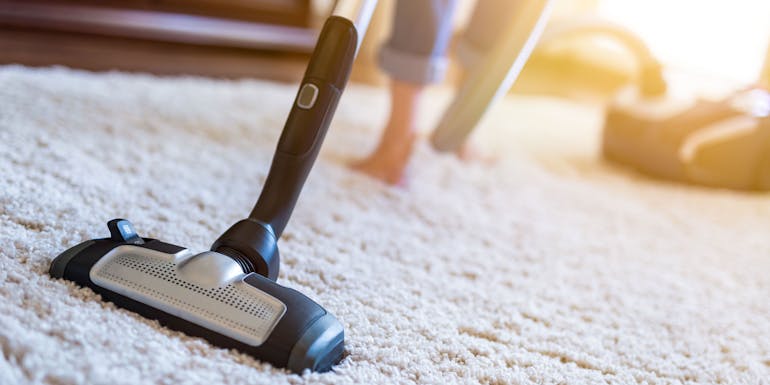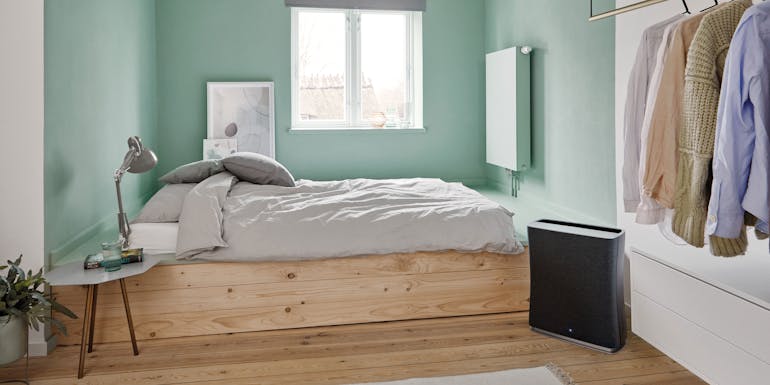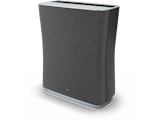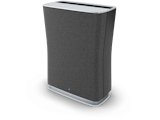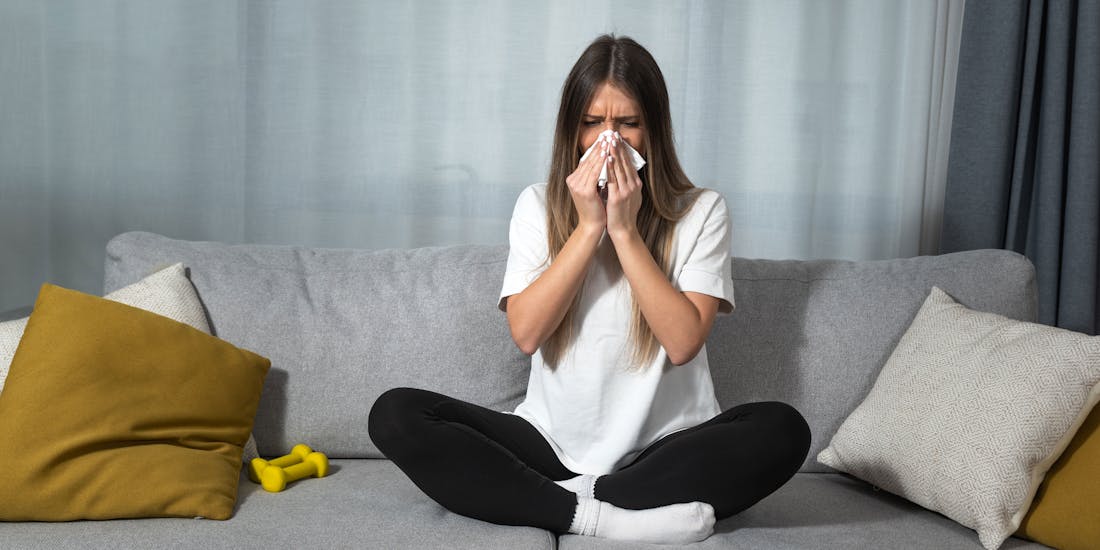
Nadine Walder, 29 April 2025
Healthy air for allergy sufferers
Allergies in the home: furnishing tips for allergy sufferers
Do you also struggle with annoying allergies? Dust mites, mould spores and other allergenic particles make life difficult for many of us, especially within our own four walls. But don't worry, with a few simple furnishing tips you can turn your home into an allergy-friendly retreat. In this article, I'll give you useful tips on how you can make your flat or house allergy-free so that you can breathe easy.
Read on to find out
- Allergy sources in the home
- Allergy symptoms in the flat or house
- Allergy-friendly room design: furnishing tips
Allergy sources in the home
The most common causes of indoor allergies are house dust mites, animal dander and mould spores. These allergens can occur all year round and millions of people suffer from them. According to the aha! Allergy Centre Switzerland, a quarter of the population in Switzerland alone is affected by an allergy, with pollen allergies being the most common at up to 20 per cent. Depending on the season, especially from spring to autumn, indoor pollen can be a major burden for allergy sufferers.
House dust mites
One of the main sources of allergies in the home or other indoor spaces are house dust mites. These are microscopic arachnids that feel particularly at home in air humidity levels above 50 per cent and warm conditions. They prefer to live in curtains, upholstered furniture, carpets, mattresses, pillows and duvets. These little animals are harmless to healthy people and do not transmit diseases. However, house dust mites release allergens through their faeces, which is a problem for allergy sufferers. According to the Federal Office of Public Health FOPH, 5 per cent of the population in Switzerland live with a house dust mite allergy and 9 per cent of adults are sensitised to the allergy. Sensitised means that there is a fundamental willingness to develop the allergy.
Mould spores
Allergies indoors can also be triggered by mould. Mould releases tiny particles, known as spores, which can trigger allergic reactions. Mould occurs both in nature and indoors. When humidity is high and materials are damp, mould can develop and infest almost all materials. To prevent mould from forming indoors, care should be taken to ensure that the relative humidity does not exceed 60 per cent. According to the aha! Allergy Centre Switzerland, between 1 per cent and 10 per cent of the population are sensitised to this allergy.
Pets
Pets are another source of allergies. Most people are sensitised to cats, dogs, rodents and horses. It is not only the pet's fur that can cause allergic reactions, but also dander and saliva, for example. As with all other allergies, the allergens bind to dust particles and can remain in the air for several hours before sinking to the ground.
Pollen
Pollen allergies, also known as hay fever, are caused by the release of plant pollen outdoors. Various grasses, trees and herbs can be pollinated at different times of the year. The pollen settles on our clothes or hair, for example, and thus gets indoors. You can find detailed information on pollen allergies in our articles on this topic:
- Hay fever? How I alleviate symptoms
- What can you do to make your bedroom pollen-free?
- 10 tips to prevent pollen allergy
- Attention allergy sufferers – pollen is flying
Allergy symptoms in the flat or house
A house dust mite allergy can cause typical symptoms such as a blocked or runny nose, sneezing and red and itchy eyes. These symptoms can often become chronic, as house dust mites are present in the home all year round. The symptoms are more severe in the morning and during the colder months. Sometimes conjunctivitis of the eyes and, rarely, asthma also occur.
Similar to other respiratory allergies, a mould allergy manifests itself with allergic rhinitis, watery eyes, coughing and breathing difficulties. Mould spores can also cause irritation of the respiratory tract, the mucous membranes of the eyes and the skin. People affected by mould allergy often also suffer from asthma. In addition to these specific complaints, non-specific symptoms such as headaches or sleep disorders can also occur. One sign of a mould allergy is that the symptoms decrease when the weather is sunny, and increase after rain.
Allergic reactions to pets can manifest themselves in the form of rhinitis, conjunctivitis of the eyes and allergic asthma. In some cases, it can even lead to a severe shock reaction. Scratch wounds from animals can also lead to swelling, infections and allergic skin irritation.
Recognising these symptoms is crucial in order to take appropriate measures to combat allergies in the home. From choosing suitable furnishings to regular cleaning, these measures can help to alleviate allergic reactions and improve your general well-being. However, if you suspect you are suffering from an allergy, you should always consult a doctor first to clarify your symptoms and treat them.
Allergy-friendly desing: furnishing tips
- Favour smooth surfaces: If you are allergic to house dust mites, you should opt for smooth surfaces when choosing furniture, as house dust mites love structure and texture. Furniture made of wood, plastic or leather provides less living space for dust mites and can also be wiped clean with a damp cloth, making it ideal for allergy sufferers.
- Regular cleaning: Cleaning your home regularly helps to reduce allergens. When cleaning, use a hoover with a HEPA filter that traps even the finest particles. Replace this regularly. Wipe smooth surfaces regularly with a damp cloth to remove dust. Keep the windows closed during cleaning to prevent dust from being stirred up.
- Not too many textiles: Avoid unnecessary textile decorations such as heavy curtains, cosy blankets and decorative cushions, which can attract dust and mites. Instead, choose washable blinds or lightweight curtains that are easy to clean. You should also avoid carpets – it's better to use tiles, linoleum or hardwood. Less is more here, especially for allergy sufferers.
- Choose the right bedding: The bed is a hotspot for house dust mites. Opt for mattresses and bedding made of antibacterial latex or cold foam, which allow air to circulate and make life difficult for dust mites. Wash your bed linen, pillows and blankets regularly every 1 to 2 weeks at a minimum of 60 °C to effectively combat house dust mites.
- Reduce moisture: Mould in the home is never a good sign and must always be removed by a specialist, as it is harmful. Especially if you are allergic to mould, you should make sure that it is not too damp in your home. A relative humidity of 40 per cent to 60 per cent is considered ideal. Reduce humidity in the bathroom and kitchen and use a hygrometer to monitor humidity. This will show you how high the relative humidity is. If the humidity is too high, you can use a dehumidifier if the humidity is too high.
- Use closed storage space: Use closed storage systems with doors for shelves and cupboards to reduce the ingress of dust. Closed storage space not only reduces allergy exposure, but also makes cleaning easier. You should also avoid furniture arrangements that create hard-to-reach niches and corners where dust can accumulate.
- Regular airing: Airing is crucial to keep your home fresh and reduce allergens. Make sure you air your home at least twice a day for a few minutes. If you have a pollen allergy, it is best to air in the early morning and late evening during the pollen season when the pollen concentration is lower.
- Use an air purifier: Air purifiers are an effective way of filtering allergy-causing particles from the air. Invest in a high-quality device that uses a multi-stage filter system to effectively remove pollen, mould spores and other allergens from the room air. Our air purifier Roger, for example, is equipped with a dual filter consisting of a HEPA filter and activated carbon filter and reliably filters the finest particles from the air.
With these simple furnishing tips, you can make your flat or house allergy-friendly and reduce annoying allergy symptoms. A low-allergen home is not only good for your health, but also ensures a better quality of life.
You can find out more about pollen allergies and healthy air for allergy sufferers on our information page. There you will find interesting articles on topics such as what to do about pollen in the bedroom or how you can reduce allergy symptoms with 10 measures.
More about healthy air for allergy sufferers
If you have questions related to indoor room climate, please get in touch with us. Or subscribe to our newsletter to regularly get informed about current topics regarding indoor climate, experience reports or Stadler Form insights.

